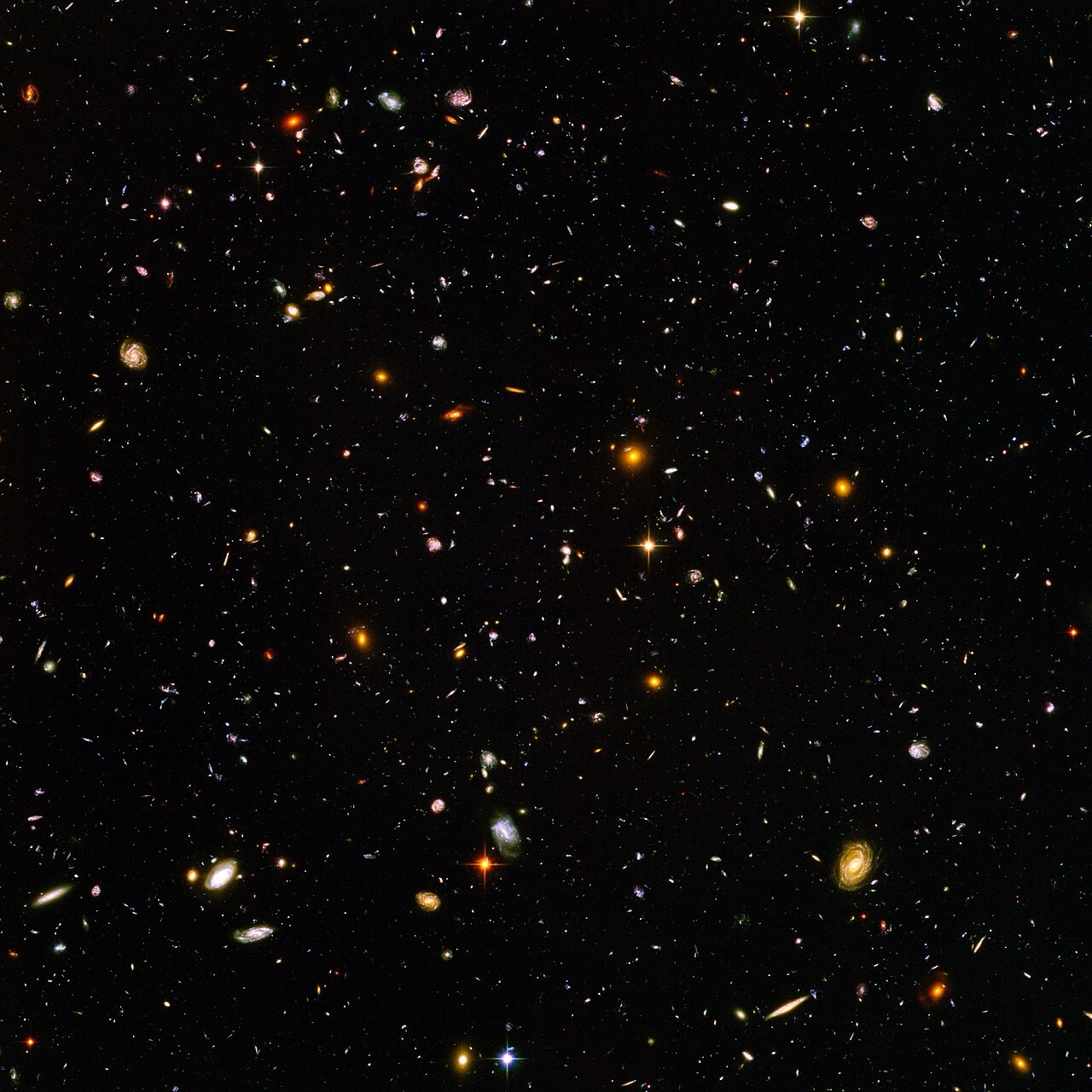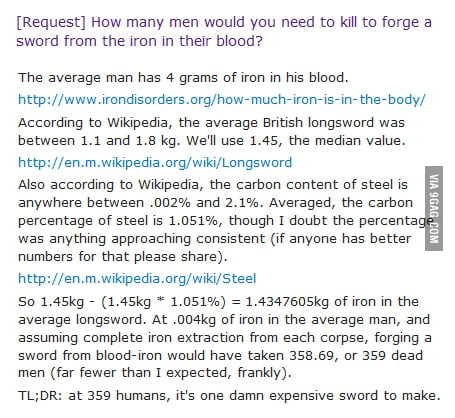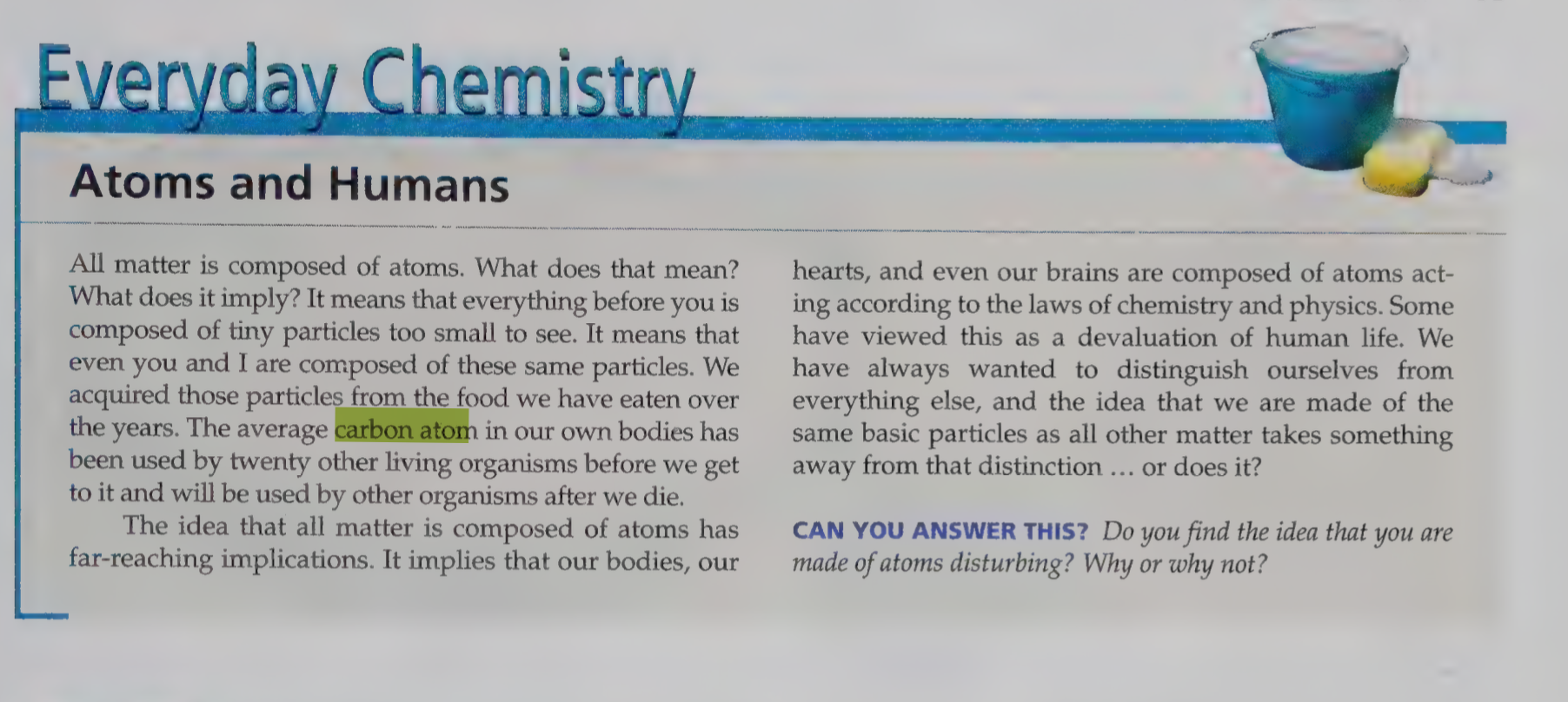That time passes differently in galaxies with different gravities. One of these galaxies is Mormon heaven.
Wait what
Gravitational time dilation is an effect of Einstein’s General Theory of Relativity. Places with stronger gravity would then have time pass more slowly compared to earth. The opposite is also true.
I think it’s the Mormon bit that’s being questioned.
Kolob is a planet or star where God resides. Time moves very slowly there. Hence the high gravitational field. Probably because God is massive. I don’t know. I’m not a Christian scientist.
Ironically Christian Scientists are actually a distinct sect/cult of US Protestant Christians and would be very angry at the Mormon idea of Kolob if they heard about it.
They also put out a pretty decent newspaper The Christian Science Monitor. At least they did 30 years ago. They don’t take much medicine either, which, fine I guess.
The problem is that they will tell people to pray away cancer, that diseases and injuries and such can be healed spiritually.
That means you can end up with kids who need actual medical help, and won’t get it, and will then be told that they’re sick because they didn’t pray hard enough, that their soul is impure and that’s why they’re sick.
…wtf?? How do you have negative one downvote?

I saw that recently too. There’s some bug somewhere.
If you downvote it it goes back up to zero and everything.
Lemmy Easter egg. Gives access to Bizzaro Lemmy. They get a mustache. That’s it.
This fact blows my mind the most.
There are more hydrogen atoms in a molecule of water than there are stars in the solar system
Every 60 seconds in Africa, a minute passes
Something should be done about this
Stop fucking clapping then
Correspondence of lovers: He: darling, without you 60 minutes seem like one hour to me! She: I love you so much, wow he is such a romantic!
fuck.
Not just that, it’s twice the amount!
🤣 in Solar system only one star… the Sun! Go to school!!!
so it’s right
it was a stupid and meaningless statement… 🤣
🤔 2 hydrogen atoms in one molecule, 1 sun in our solar system 🤔
The fact that planes are kept in the air by the shape of their wings, which forces air to go over at a pace when it can’t push down on the wing as hard as it can push up from underneath. It’s like discovering an exploitable glitch in a videogame and every time I fly I worry that the universe will get patched while I’m at 10,000 feet.
I remember reading a couple years ago that’s not actually how plane wings work. The actual way is much more complicated and hard to explain and hard to teach, so they just teach it this way because its an intuitive mental model that is “close enough” and “seems right”, and it really doesn’t matter unless you’re a plane wing designer.
The false thing they teach is that air has to go over the longer side faster. Actually, it’s under no obligation to meet back with the same air on the other side, and doesn’t in practice. The real magic bit is the corner on the back, which is not aerodynamic and “forces” air to move parallel to it (eventually, as the starting vortex dissipates).
The pressure difference from different volumetric flow speeds is real, it’s just not that straightforward to produce, because air mostly does whatever it wants. A lot of aerodynamics is still more art than science, and it’s even possible the Navier-Stokes equations it’s based on fail under certain conditions.
Yes, this is what I was thinking of, thanks for filling us in.
The basic way an airplane works actually is simple and intuitive: it meets the air at an angle and deflects it downward. The equal and opposite reaction to accelerating that mass of air is an upward force on the wing.
There is, of course a whole lot of finesse on top of that with differences in wing design having huge impacts on the performance and handling of aircraft due to various aerodynamic phenomena which are anything but simple or intuitive. A thin, flat wing will fly though, and balsa wood toy airplanes usually use exactly that.
https://en.wikipedia.org/wiki/Lift_(force)#Simplified_physical_explanations_of_lift_on_an_airfoil
“With a big enough engine you can make a barn door fly.”
Tbf, you can make anything fly if you give it enough thrust. Wings just make it easier.
In a sense, everything can fly. Just sometimes not for very long.
Except bees. Engineers reckon they shouldn’t be able to fly, but bees told them to get fucked and do it anyway
BEHOLD THE CUBE PLANE
You joke, but lemme introduce you to Tacit Blue:

Yes, this thing did actually fly.
Stealth demonstator aircraft from the early 80s.
How do we stop radar? By obliterating the air around us with cube. Lol
That is actually pretty neat though!
Like someone flipped a bathtub over and made it fly.
I mean, it’s not something for nothing. You still get drag at least matching lift to conserve energy.
For me, it’s the sheer size of some celestial bodies.
Our Sun is humongous. UY Scuti is 1700 times larger. And then there’s TON 618, which has a mass 66 billion times larger than our Sun’s.
And even those are barely grains of sand when compared to solar and even galactic structures… It is humbling, to say the least.
Now, think about the energy and forces involved when 2 supermassive black holes orbit each other and collide.
Ooh, those aspects are well beyond my capacity for comprehension or visualisation! I feel like an ant watching nuclear explosions.
You can observe the chirality of some molecules from the crystals they form, sometimes they twist clockwise, other times they twist counter clockwise. Which way they twist is dependent on their molecular structure.
If math is actually uncovering fundamental laws of the universe, rather than just describing it at various scales, then there’s a chance we can rewrite reality with our own set of rules that would render the current ones incompatible (by Gödel’s-IT).
https://en.wikipedia.org/wiki/Mathematical_universe_hypothesis
Tegmark’s MUH is the hypothesis that our external physical reality is a mathematical structure.[3] That is, the physical universe is not merely described by mathematics, but is mathematics — specifically, a mathematical structure.
Look, I only heard about this concept, so maybe there’s more to it, but branches of mathematics are just a set of rules that we create.
Sometimes these rules can be applied to real systems, in our reality, and that helps to describe and understand the universe.
But it’s totally possible to come up with infinite nonsensical, useless mathematical systems that have nothing to do with the universe. The existence of these doesn’t mean that we have or could rewrite reality.
If our universe is bound by the laws of mathematics (big IF), then any theorem discovered within it has to be consistent or incomplete w.r.t it.
If a theorem is discovered that upends math as we know it, then the repercussions could be cosmic.Again, big if about the universe being bound by the laws of maths
Discovery a truth of the universe is not going to affect the truth of the universe.
You’re appearing to claim something nonsensical. The sort of wow-bang nonsense one reads about in pop-science magazines.
(I’m going to abrasively emphasize the conjunctions more, because I feel they’re being glossed over)
IF the truths of our universe are completely mathematically and axiomatically bound, THEN any proof derived within it might have a chance of upsetting a given axiom given the either incomplete or inconsistent nature of mathematics as declared by Gödel, the ramifications of which COULD be dire in such a universe.
I’m NOT saying our universe IS mathematically bound. I’m also NOT saying that a newly discovered universal axiom WILL change the structure of such a universe.
I actually believe that maths merely describes our reality at varying scales.
I am presenting an interesting idea that for some reason is being taken quite literally, and now am having to get defensive about it as if it’s a deeply-held belief of mine…
Yes, we understood what you were saying.
But your IF is followed by a nonsensical statement.
It’s a precondition that can’t be true.
A shotgun
…? … Oooooohhh. Haha that’s some fine gallows humor.
That our species took millions of years of evolution and the chance for it to be exactly this way was so infinitesimal… And yet here we are, chasing arbitrary numbers on paper-slices and in some bank-account while also being sexists, racists, whatever-ists and destroying the very rock we exist on. Yet things like star trek are called utopia not actual-ia.
This always baffle me.
Yes, but have you considered [INSERT OUTGROUP] are bad? /s
To play devil’s advocate, considering that in evolutionary terms we just left the trees now, we’re doing okay, honestly. I just don’t know if it will be enough.
If you’d consider this broadly points at everything “ok”, I’d frigging fear your “moderately bad” 😁
Moderately bad would be, for example, getting stuck in the agrarian neolithic for geological time because every significant technological advance leads to a devastating social collapse that wipes it away. If farming is already a new thing to the species, why shouldn’t we struggle just to keep it going at a basic level?
I mean, technologies getting lost did happen all the time, and social progress basically didn’t exist until recently. But, progress eventually came. By the 20th century there was little anyone from the paleolithic would recognise in Western life, but we adapted, with only a few health and demographic problems to show for it.
Besides my point being not totally serious, you’re right. Technically. Yet big changes were always at the doorstep and could happen. I just highly doubt the current capitalism-era could ever end. There might be tiny revolts here and there, but there would be so many concurrently happening events needed it seems impossible. Also there’s no viable alternative. At least none everyone sees. Anyhow, I’d say it’s a bit too complex for a discussion in text-form.
Hah, I actually make a lot less sense when not in text form. I can write, reorder and edit a bunch on here. IRL my very first communication idea comes out, and it’s stupid.
I know this is .ml, but I don’t really expect a global revolution either. Then again, the UK never had a (successful) revolution, and their monarch is just a figurehead at this point, so I still expect change, good or bad.
I dunno whether it counts: but that science has effectively cured AIDS.
In 2004, 2.1m people died from it. Twenty years later that figure was a little over a quarter at 630k. The goal for 2025 is 250k. I think that’s absolutely remarkable.
As a child in the 80s I was terrified of AIDS. It made me low-key scared of gay men because the news made it sound like I could I could get it from any one of them. And here we now are, able to provide a medication that can almost completely ensure that you will never be infected by HIV.
Astonishing, really.
Yeah.
There’s waaay worse things you can catch.
I’m terrified of going into lakes and rivers because of what might find its way into my skin.
The size of the universe and the distance between everything in it. It takes about 8 minutes for light from our own sun to reach us. And the observable universe is about 5,859,000,000,000,000,000 times larger than that! That is quite a trip. I would need about 293,283,000,000,000,000,000,000,000 charging stops with my electric car to get to the end. I think I’ll pass.
Awesome!
What I find mind blowing about the scale of the universe, is that on a logarithmic scale from the smallest possible thing to the largest possible thing, humans live at almost the exact centre.
It’s so absurdly big. Our galaxy (the Milky Way) is estimated to have between 100 and 400 billion stars in it. For a long time we thought our galaxy was all there was, it wasn’t until 1925 when Edwin Hubble was able to prove that M31 was not a nebula or cluster of stars in our galaxy, but in fact an entirely different galaxy altogether that we realized there are more galaxies out there.
Look at the Hubble Ultra Deep Field picture

This was a taken by pointing the Hubble Space Telescope at a basically empty bit of space 2.4 by 2.4 arcminutes in size (for comparison, the moon has an apparent size of about 30 arcminutes, or half a degree). So an absolutely tiny part of the sky. It contains about 10.000 galaxies.
The observable universe is estimated to have between 200 billion and 2 trillion galaxies in it, with on average about 100 billion stars per galaxy. It’s absolutely mind blowing.
In chemistry I was taught one carbon atom can exist in at least 12 separate living bodies before it’s no longer stable.
What does that mean?
After you die, the carbon atoms that made you might go on to make another living thing.
As you established that is not true, however you can add some of that carbon from some body and add it to the iron from the blood of 400 other human bodies so you can forge one nice sword.

Unrelated: Anyone want to hang out? I’m planning a party. Should be enough space for about 400 people.
Holy shit lol. This is amazing!!!
Hon I think you maybe misunderstood your chem class.
Carbon is carbon is carbon and doesn’t know or care if it’s in a living body.
Carbon-14 has a half life of 5700 years. This means that through random decay, the approximate rate of decay is one half of a given amount every 5700 years, this of course breaks down when you reach the single-digit quantities of atoms.
Now, this has nothing to do with the stability of an atom of regular-ass carbon-12, your common garden variety carbon, which is extremely stable and would require outside influence to decay into another isotope.
Ahhh I misremembered. It was this “The average carbon atom in our bodies has been used by twenty other organisms before we get to it and will be used by other organisms after we die.”

It’s been six years since that class.
ah, yeah. that makes more sense
that doesn’t make any sense. Carbon doesn’t get less stable by being used in bodies.
Carbon 14 exists, but that decays regardless if it’s in a body or not. At has quite a long half life
At least is a heavy lifting qualifier in this case.
There are more stars in the visible universe than there are grains of sand on all the beaches in the world.
Retinal photosynthesis, also known as the Purple Earth Theory. Colours are weird. Earth plants absorb red and blue light, they look green to us because that’s the wavelength of light that cannot be used by the chloroplasts.
It’s hypothesized that this was advantageous on Earth because blue light goes further into water than the other wavelengths, facilitating the development of photosynthetic algae
Retinal photosynthesis is another viable chemical chain reaction that could be used to create ATP (usable biological energy) from light.
It’s another molecule similar to chlorophyll, but it absorbs green light instead of red/blue - alien planets might be purple!
There’s a viable parallel evolutionary pathway that leads to plants with magenta leaves
alien planets could be purple
So the prophecies are true…
So humans vision is much more sensitive to green than other colors. it’s why camera sensors are 50% green 25% red 25% blue. Which makes sense as being able to detect small differences in plant cover is useful in both detecting predators and prey.
https://en.m.wikipedia.org/wiki/Bayer_filter
If humans had more flat color detection range we woulda actually be able to see that the sky is purple and not blue.
Actually, there’s some contradicting evidence that came up recently-sh. If you factor in the challenge of not being fried by the very incoming light you need, every photosynthesiser is about the right colour for it’s environment.
By that, alien planets would be coloured depending on their star type, and the ancient cyanobacteria of Earth were probably green too.
When the moon is at its farthest orbit from earth, all of the planets in the solar system can fit in between earth and the moon.
Just in general how spread apart everything is in space is wild. As big as planets and stars are, there’s still unfathomably more nothing in between them all. And that’s in a solar system where it’s comparatively “dense” compared to interstellar space let alone intergalactic. It makes the vastness of the ocean look tiny.
My old school had a scale model of the solar system. It used the same scale for the planets size and distance. The sun was a 12" ball on one end of campus. Around campus were poles with little glass domes on top inside were tiny pins with little planet models on them.
Here’s a version you can scroll through to-scale. Patience required.
The label ‘homo sapiens’ for our species.
…homo sapiens sapiens: so wise we named ourselves twice…
More like homo ignorare, yes?
Homo ignorans :)


















